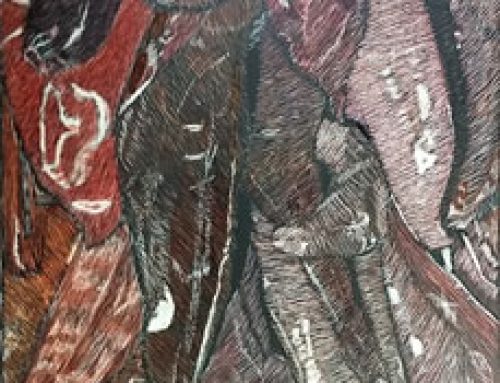Main Characters
Disclaimer
The framework built within this multi-part blog is for educational purposes only. It is presented only as an example. All rights are reserved (of course), but the author does grant permission for others to use it as an outline for practice and creation of derivative unpublished works in all media.Now we get into the meat of it. Our main characters. I already chose to have two sisters be our focus. Question is, which is our MAIN character — the one that we’ll use as the surrogate for the reader? I’m opting for the younger sister. Why? We’ve given her the last line. It’s not that it won’t work the other way, but decisions have to be made.
What do we need to know about these characters? I guess their names would be a good first step. Let’s name the twenty-six-year-old Katherina “Kate” or “Katy, K-T” Takara (pure treasured one) Borda. Katherina can be either Greek or Russian, Takara is her grandmother’s name. For the nineteen-year-old, let’s go with something more Greek. Let’s try Melinda “Mel” Calista (meaning gentle most beautiful one) Borda.
That’s a start. Now let’s develop them a bit. We’ll start with Kate.
Kate
Since she’s older, and assuming she’s the instigator in buying out her father’s kiosk, let’s have her be graduated from the local four-year state college with a degree in business. While she had some assistance from her parents (mostly from her mom’s savings for her own education), most of her college was paid by Kate’s working — first in food services on campus, then as a business advisor for students at the nearby arts college.
OK. That’s the easy part. But who is Kate?
Since she is the elder, that implies aspects of how she grew up. Her parents would be more over-protective since they were new at it. Since she’s seven years older than her sister, that means that she probably had responsibility in taking care of Mel. This has implications now that they are adults and working together — can Kate keep from looking out/patronizing her younger sister, and can Mel keep from expecting Kate to protect her and bail her out when necessary? Is this something that we, as writers, want to make an element of the story? Too soon to say. I think more fleshing out is in order.
It’s easy to make Kate a gung-ho workaholic, but I think we need to give her more respect than that. If we accept that she’s not a spinster, then how wild do we want her to be? Since she worked so much in school, I don’t think that she dated too much in college due to lack of time, energy, and extra funds. Maybe only during the summers when she had time. It’s logical to assume that to save money she stayed at home. Let’s say that being a good Greek Orthodox girl, she saved herself until it was love… let’s say she waited until she was twenty or so. My guess is that her home still had close ties with the Hellenic culture of her neighborhood, so it’s likely that most of her dates were with young men she’s known most of her life.
Though she hasn’t been married, I’m going to have had her engaged to be married. The date being set not long after her college graduation. She’s the one who backed out. Her reason was in wanting to have a life before she had a family. Given the fact that her mother married a non-Greek, combined with this rejection of a perfectly good Greek boy, she earned herself a fair amount of enmity within the Greek community. Enough so that she moved out once she had enough money from her first professional job.
What kind of jobs has she had since college? The first job will have had to have been fairly low level. Because of her tight family ties, she’s still not far from home. Though I haven’t established that they don’t live in a big city…. well, they don’t live in a big city. So, her opportunities are limited. Because of her background of working at the art school, let’s have her being the accountant/marketing person/etc. for a critically praised but struggling small gallery. She got it via a reference of an artist whom she helped when at the art college. The artist is a little smitten with her.
Through no fault of her own, the gallery failed. Still, it tainted her resume, and she found it even harder to find a job. As her father’s little mall kiosk had promise, but was failing due to lack of care, she decided to take her meager savings and (with some financial help from Mel) bought him out.
Now it’s Mel’s turn.
Mel
We’ve established that she’s nineteen. She’s graduated from high school. She looks up to her big sister; in some ways Katy is like a second mother. Still, since she’s always heard comparisons to Kate, she has a bit of resentment about her as well. It’s not all that obvious within the family or to close friends, but outside of that core group it’s spotted immediately.
Mel’s interest has always been with creating art. While she can draw and paint to almost a professional level, her love is small sculpture. She loves working with metal, clay, wax…. it doesn’t matter. Because flowers are such an integral part of framing her subjects, she’s also become quite the amateur botanist as well. Her mother had given her the last of her education fund for the purpose of going to the art school. Mel attended one semester, but then gave all the money she had (which was to pay for the second semester… maybe a little more) to Kate for the business. Her thinking was that if her life was in art, she should be doing it instead of studying it. Story-wise, it might be good if that thought is both good and bad… while she does gain valuable experience, she’s also lacking in some techniques that could elevate her to the next level, as well as reduce her workload. Also, it might cause some friction with her mother because of the fund diversion.
In contrast to Kate, Mel has always had an active social life. While she wasn’t a “wild child” that didn’t mean that she was tame, either. She lost her virginity to Nick Angelopolos, the seventeen year-old down the block, when she was fifteen. Her mom was at the catering business, dad was off somewhere, and Kate was at school. It didn’t result in a long-term anything, by her choice. Mostly, though, she preferred to hang out in groups and do things (such as artistic graffiti) that were less than legal. Except for the raid at an after-prom party when she was arrested for underage drinking (the charges were later dropped), she never got into any direct trouble with the law.
Detailing Kate and Mel
OK. Now we have broad strokes for these two characters. Time to look at other stuff. This is where you can add personality quirks. If you are looking to insert stuff that has happened “in real life”, this is a good place for it. It’s still just backstory, but it really helps to make the characters more real to the writer. The trick is to not go too far afield with this. You still have to be true to the character you’ve been building.
Since they grew up in an oddly ethnic household, they are very accustomed to dinner tables that hold not only spanakopita, but borscht as well. They’ve learned how to prepare just about every kind of dish. Away from home, they usually just order hamburgers or pizza.
Kate likes to drink, and sometimes over-indulges. After getting caught in that raid, Mel swore off alcohol, drugs, and anything else that could get her in trouble. As she’s still underage, her resolve on that score hasn’t really been tested.
When Mel was only three or four, and the family was at a pool (or an ocean, or the lake), Kate picked her up and constantly threatened to throw her into the water. Mel was understandably terrified. She’s never gotten comfortable with the water — she’s had three rounds of swimming lessons and never passed.
Kate has trouble eating eggs. Once, when she was eight or nine, she cracked open a fertilized egg and she could see the blood and stuff. She’ll still eat them and cook with them… just not with gusto. Generally she doesn’t think about it except for Easter, when red eggs are baked into bread (it’s a Greek thing). The red just reminds her of the blood she saw and it makes her shudder.
After buying the business, Mel spends more time at Kate’s than at their parents’… though she hasn’t moved out. It’s just that Kate’s place is closer.
At this point, I’m sort of picturing in my head Mel as being all jeans and leather while Kate is all skirt suits. Let’s twist that a little (it’s the little twists that really help individualize characters). They each think of themselves that sartorial way, but in truth Kate tends to dress casual (not business casual), while Mel owns more 3″ pumps than biker boots. Which aspect is nature and which is nurture? Is Kate rebelling from the straight-laced business world, or perhaps the expectations of being the elder? Or is she instead fighting her true nature? And Mel… is she a closet young Republican and just thinking of herself as a wild one because she fits in better with her peer group?
I think we’ve just discovered our fundamental conflict — as the girls live together without mommy and daddy being a buffer, they have to come to terms with who they really are. But that seems a rather conventional conflict, doesn’t it? Perhaps we can find something better when we turn to the plot.
Comments
Isn’t this interesting? Look at how much that’s been written as BACKSTORY. Hardly any words touching on the plot or what we are going to write. Shoot, we still have one more major character to work on (remember that art guy who will work at the kiosk), maybe more. And still we don’t have a story.
Why is this significant?
Think about the character backgrounds that have been tossed out so far. Are you starting to feel like they are people? In some ways, through this development, are scenes floating through your head? It doesn’t matter that you don’t have a story yet; these are becoming characters with distinct personalities. Unfortunately this is where it’s so easy to go astray. It’s easy to think that armed only with a few characters and a premise, writers can easily write something worth reading. Fact of the matter is we still have to construct a story that makes sense. After we finish working up a few more characters — and maybe adding to what we already have — we’ll start attacking the plot.
The amazing thing? Most of this probably isn’t going to find its way into the story… at least not directly. This is only for us, the writers. Think of it as being like a fanfic. We’re developing the characters first. Then we’ll develop a story — relieving us of the burden of simultaneously having to create characters out of whole cloth. Yes, it’s a just a cheap mental trick, but an effective one.
At this point, had I not seen sisters interact, I’d be seeking out some friends who have sisters (or a number of daughters of their own). If ever there was a time to do a tweak with some verisimilitude, this is it.
We’ve got our sisters and their background set up. Next time we’ll think about other characters.
Don’t forget to check out the other parts of this series:
Part 1 – Premise and Parents
Part 2 – Main Characters (this part)
Part 3 – The Support Character and Plot Happens
Part 4 – Building the Plot





